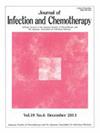基于SARS-CoV-2核酸扩增试验的慢病毒序列定制可追溯国际标准材料开发及外部质量评估试点验证
IF 1.9
4区 医学
Q3 INFECTIOUS DISEASES
引用次数: 0
摘要
背景核酸扩增检验(NAATs)的国际标准化和质量控制需要符合国际标准的可追溯全过程控制材料。我们提出了一种生产序列定制、可溯源的全过程控制的方案,并以 SARS-CoV-2 NAATs 为模型,通过试验性外部质量评估(EQA)验证了其稳定性和实用性。使用慢病毒高滴度包装混合液(pLVSIN-CMV Neo Vector,Takara Bio)生成重组慢病毒材料。在-80°C冻融循环一次后,在 4°C 或 25°C 孵育七天,评估其稳定性。参考 SARS-CoV-2 反转录定量 PCR 采用世界卫生组织国际标准材料(美国国家生物标准与控制研究所)进行国际标准化。结果原始序列定制的慢病毒材料在10% FBS/DMEM中的106倍稀释度(低浓度为7.41 x 103 IU/mL)在4 °C冻融后可稳定7天。30 家实验室对高浓度材料报告了阳性结果,27 家实验室对低浓度材料报告了阳性结果。使用 GeneXpert(8 个实验室),高浓度材料的 Ct 值为 22.6-26.7,低浓度材料的 Ct 值为 32.5-37.0。一家使用 FilmArray 的实验室报告所有材料的检测结果均为阴性。EQA 结果强调了 NAAT 国际标准化的重要性。这些材料将有助于 NAAT 国际标准化、内部质量控制和各实验室的 EQA。本文章由计算机程序翻译,如有差异,请以英文原文为准。
Development of Traceable International Standard Materials Using Sequence-Customized Lentivirus, Modeled on SARS-CoV-2 Nucleic Acid Amplification Tests, and Validation through a Pilot External Quality Assessment
Background
International standardization and quality control of nucleic acid amplification tests (NAATs) require traceable, full-process control materials aligned with international standards. We proposed a protocol for producing sequence-customized, traceable full-process controls, validated for stability and utility through a pilot external quality assessment (EQA) using SARS-CoV-2 NAATs as a model.
Methods
The concatenated SARS-CoV-2 NAATs target sequence was synthesized as a DNA fragment. A recombinant lentiviral material was generated using the Lentiviral High Titer Packaging Mix (pLVSIN-CMV Neo Vector, Takara Bio). Stability was evaluated after one freeze-thaw cycle at -80°C followed by incubation at 4°C or 25°C for seven days. The reference SARS-CoV-2 reverse transcription-quantitative PCR was standardized internationally using the WHO international standard material (National Institute for Biological Standards and Control). A pilot EQA of SARS-CoV-2 NAAT was conducted in 31 laboratories using high, low, and negative lentiviral materials.
Results
The 106-fold dilutions (7.41 x 103 IU/mL as low-concentration) in 10% FBS/DMEM of the original sequence-customized lentiviral materials were stable for seven days at 4 °C after freeze-thaw. Thirty laboratories reported positive results for high-concentration material, while 27 reported positive results for low-concentration material. GeneXpert (eight laboratories), with Ct values ranging from 22.6-26.7 for high and 32.5-37.0 for low-concentration. One laboratory using FilmArray reported negative results for all materials.
Conclusions
The sequence-customized and traceable lentiviral materials demonstrated suitable characteristics for EQA. The EQA results emphasize the importance of NAAT international standardization. These materials would help with NAAT international standardization, internal quality control, and EQA in individual laboratories.
求助全文
通过发布文献求助,成功后即可免费获取论文全文。
去求助
来源期刊

Journal of Infection and Chemotherapy
INFECTIOUS DISEASES-PHARMACOLOGY & PHARMACY
CiteScore
4.10
自引率
4.50%
发文量
303
审稿时长
47 days
期刊介绍:
The Journal of Infection and Chemotherapy (JIC) — official journal of the Japanese Society of Chemotherapy and The Japanese Association for Infectious Diseases — welcomes original papers, laboratory or clinical, as well as case reports, notes, committee reports, surveillance and guidelines from all parts of the world on all aspects of chemotherapy, covering the pathogenesis, diagnosis, treatment, and control of infection, including treatment with anticancer drugs. Experimental studies on animal models and pharmacokinetics, and reports on epidemiology and clinical trials are particularly welcome.
 求助内容:
求助内容: 应助结果提醒方式:
应助结果提醒方式:


